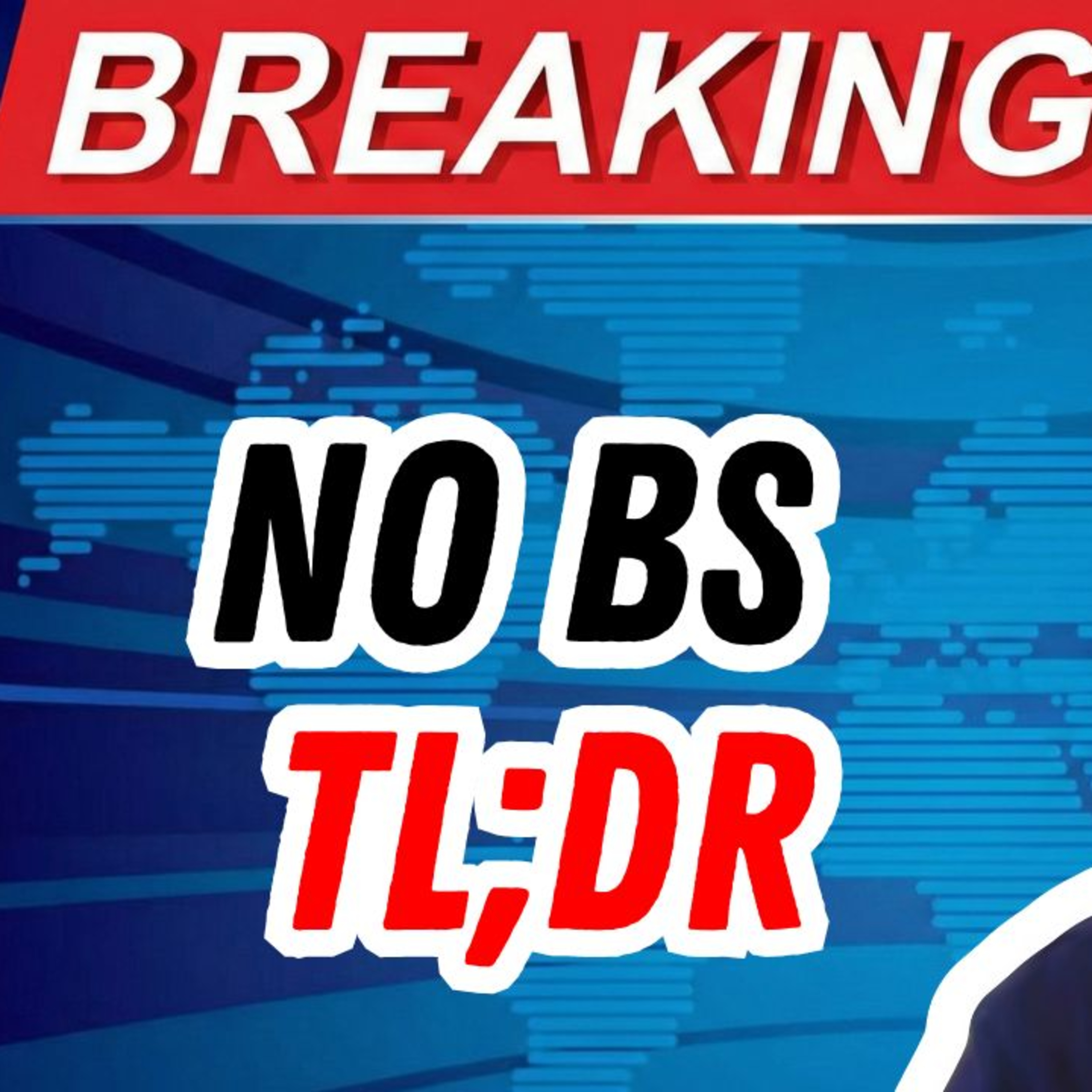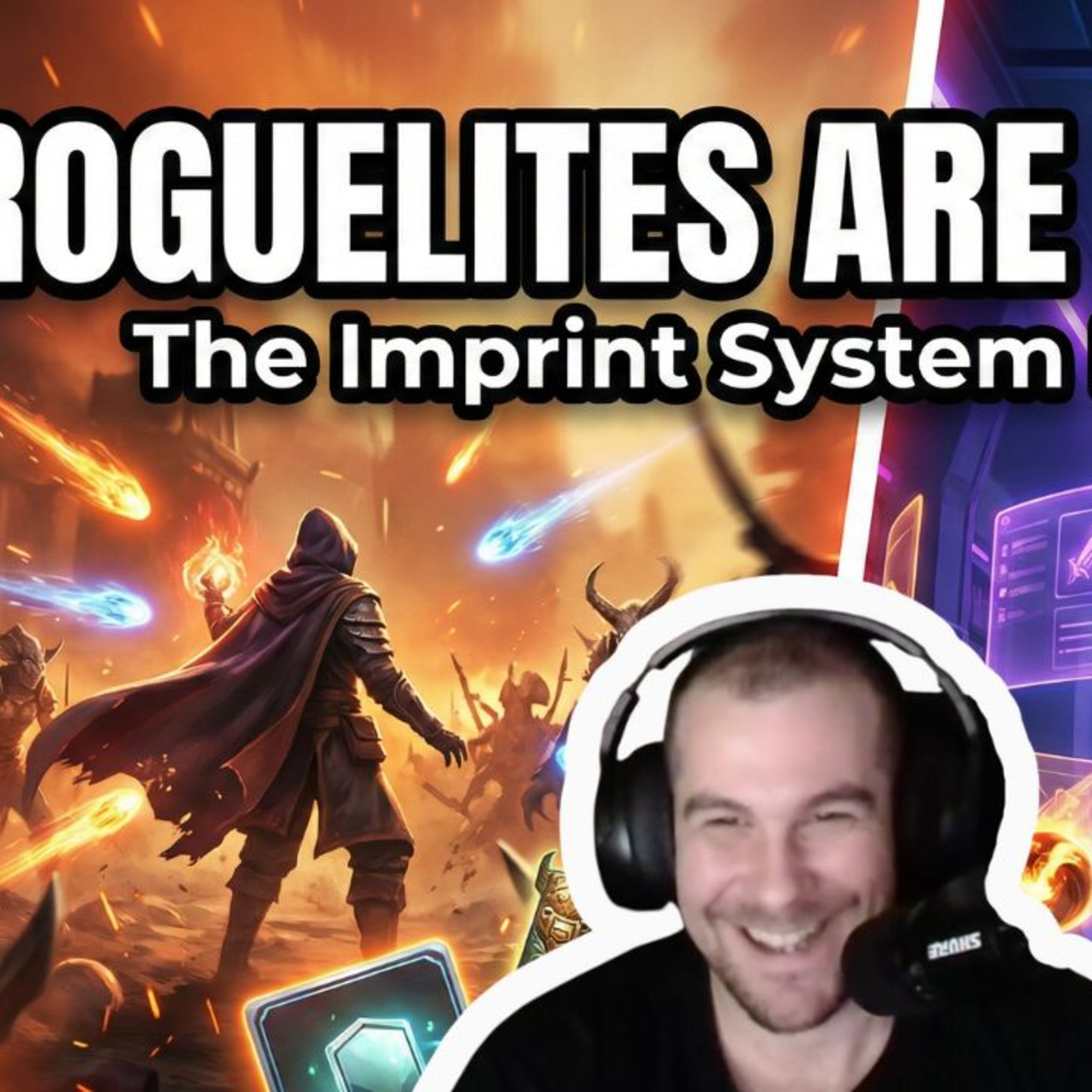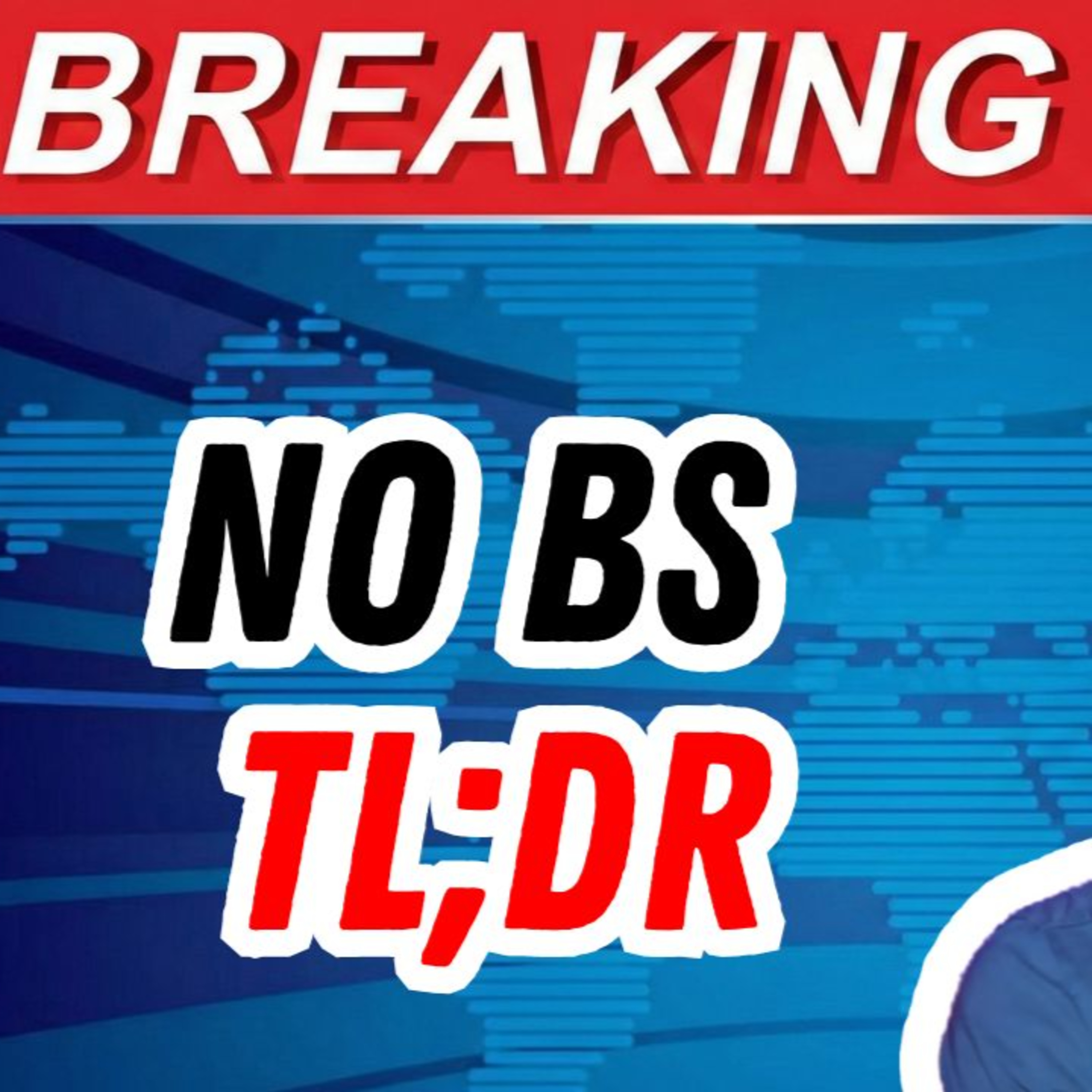What payback should I aim for? Mastering CPI & LTV in Mobile Gaming by Matej Lancaric
In this episode, Matej Lancaric discusses the critical relationship between Cost Per Install (CPI) and Lifetime Value (LTV) in mobile gaming. He explores how different game genres affect these metrics, the importance of churn prediction for user retention, and strategies for optimizing user acquisition.
The monologue also covers the significance of payback periods and how to utilize LTV predictions for effective marketing strategies, ultimately emphasizing the need for informed decision-making in the competitive mobile gaming landscape.
This is no BS gaming podcast 2.5 gamers session. Sharing actionable insights, dropping knowledge from our day-to-day User Acquisition, Game Design, and Ad monetization jobs. We are definitely not discussing the latest industry news, but having so much fun! Let’s not forget this is a 4 a.m. conference discussion vibe, so let's not take it too seriously.
Panelists: Jakub Remiar, Felix Braberg, Matej Lancaric
Youtube: https://youtu.be/56V_6ZYyM_0
Join our slack channel here: https://join.slack.com/t/two-and-half-gamers/shared_invite/zt-2um8eguhf-c~H9idcxM271mnPzdWbipg
Chapters
00:00 Introduction to Game Genres and Revenue Models
01:14 Understanding CPI and LTV in Mobile Gaming
12:09 Churn Prediction and User Retention Strategies
14:37 Decision-Making Based on CPI vs LTV
18:01 Payback Periods Across Game Genres
22:30 Utilizing LTV Predictions for User Acquisition
28:09 Conclusion and Key Takeaways
---------------------------------------
Matej Lancaric
User Acquisition & Creatives Consultant
https://lancaric.me
---------------------------------------
Takeaways
CPI is a critical metric for user acquisition budgets.
Different game genres have varying payback periods.
User engagement directly influences LTV.
Regular game updates can enhance user retention.
For profitability, CPI should always be lower than LTV.
Predictive modeling aids in targeting high-value users.
Analyzing competitors can provide valuable benchmarks.
Understanding the CPI-LTV equation is essential for success.
---------------------------------------
Please share the podcast with your industry friends, dogs & cats. Especially cats! They love it!
Hit the Subscribe button on YouTube, Spotify, and Apple!
Please share feedback and comments - matej@lancaric.me
---------------------------------------
If you are interested in getting UA tips every week on Monday, visit lancaric.substack.com & sign up for the Brutally Honest newsletter by Matej Lancaric
Latest article - https://open.substack.com/pub/lancaric/p/match-3d-ua-playbook-real-data-inside?r=7qqaf&utm_campaign=post&utm_medium=web&showWelcomeOnShare=true
Do you have UA questions nobody can answer? Ask Matej AI - the First UA AI in the gaming industry! https://lancaric.me/matej-ai
Press play and read along
Transcript
Speaker 1 We have a game genre that affects the payback period quite heavily. So we have hypercacial games, TPO, we had, oh, come on, they're still out there and still make money.
Speaker 1 And we discussed with Felix ultra casual games as well, especially games coming from Southeast Asia or games and companies, which are still earning millions of dollars per month.
Speaker 1
It's 4 a.m. and we're rolling the dice.
Mate drops, knowledge knowledge made of gold and ice. Felix with ads making those coins rise.
Jackup designs worlds chasing the sky.
Speaker 1
We're the two and a half gamers, the midnight crew. Talking UA adverts and game design too.
Matei, Felix, Shaku, bringing the insight. We're rocking those vibes till the early daylight.
Speaker 1
But KUA master eyes on the prize. Tracking data through the cyberspace skies.
Felix stacks colors like a wizard in disguise. Jackups crafting realms lift us to the highs.
Speaker 1
Two and a half gamers talking smack. Slow hockey sick, got your back.
Ads are beautiful, they like the way. Click it fast, don't delay.
Uh-huh.
Speaker 1 Uh-huh.
Speaker 1 Uh-huh.
Speaker 1 Uh-huh.
Speaker 1 Uh-huh.
Speaker 1 Hello, everyone. Welcome to two and a half gamers ASMR Insights.
Speaker 1 Well, I guess I'm the only one who calls it this way.
Speaker 1 Today, I'm gonna talk about again
Speaker 1 and again, hello
Speaker 1 today I'm gonna talk about the CPI versus LTV equation
Speaker 1 and thank you very much for the feedback last time.
Speaker 1 I was talking about how to conquer a farming game market and I was playing Archer or 2. Well, I guess the decision wasn't that great, right?
Speaker 1 But here we are.
Speaker 1 I heard you. This time I'm going to be playing Color Block Jam,
Speaker 1 which we also cover.
Speaker 1
Well, based on this episode, I guess depends when this episode comes out, but we either cover or already covered it. Almost probably already covered it because the game is really, really good.
Okay.
Speaker 1
So again, thank you very much for the support and for the feedback. Please keep it coming.
This is again an experimentation from our end because we love to experiment.
Speaker 1 Well, I'm going to talk about the CPI and LTV equation.
Speaker 1 In the competitive landscape of mobile gaming, understanding the dynamics between costs per install and add lifetime value is crucial for optimizing user acquisition strategies and maximizing revenue.
Speaker 1 So this recording goes into how CPI influences the UA spend, the calculation of LTV, decision making based on the CPI versus the LTV equation, what is the ideal payback period for different game genres, the use of LTV prediction UA, and sitting on benchmarks versus utilizing LTV predictions.
Speaker 1 Bucklap.
Speaker 1
This is gonna be an interesting episode. Here we go.
So how does CPI influences the user acquisition spend? Well, the CPI is, well, let's start with what the CPI is actually.
Speaker 1 The cost per install is the average cost incurred by the game developer or publisher every time a user installs their game or app through paid advertising efforts.
Speaker 1 CPI is a critical metric because it directly impacts the overall budget required for UA campaigns.
Speaker 1 So how do you allocate budget? Because a higher CPI means acquiring each user is more expensive, requiring a larger budget to meet the UA goals.
Speaker 1 Conversely, a lower CPI allows more users to be acquired within the same budget.
Speaker 1 No shit. Market competitiveness also influences the CPI, because CPI
Speaker 1 rates are influenced by the market demand and the competition. Popular RANDRAS or keywords, because it's still, if you bid on the keywords on Web2App,
Speaker 1 may have higher CPIs or keywords in the Apple search ads due to increased bidding from multiple advertisers.
Speaker 1 And there is also the targeting options and overall quality of the users that have a very big effect on the CPIs. Broad targeting may result in lower CPIs but attract less engaged users.
Speaker 1 Narrowing targeting can increase the CPIs but potentially attract higher value users. This also
Speaker 1 comes into
Speaker 1 the up event optimization.
Speaker 1 Different
Speaker 1 events produces different CPIs and also different quality of the users.
Speaker 1 Scaling campaigns and understanding the CPI helps
Speaker 1 always in the scaling the campaigns efficiently. If the CPI is low and the quality of users is high, it makes sense to increase the spend, right?
Speaker 1 US spending should be also calibrated so that the CPI does not exceed the LTV of the users required, ensuring the positive return on investment.
Speaker 1 Scaling a game is not only a function of a killer user acquisition operations, it's also a function of an LTV.
Speaker 1 If you can only scale your budget until LTV allows you to do so, so for example, if your LTV is $5,
Speaker 1 you can run profitable campaigns until you hit, let's say, $4.5 dollar CPIs.
Speaker 1 Any other higher CPIs that you calculated based on your margins, that also is very important for your health of the business. I have my favorite CPI graph from the past,
Speaker 1
which I need to definitely update. I usually use it where I compare different genres and their CPIs.
You remember Frozen City?
Speaker 1 It's a blast from the past, but it serves the purpose well as an example. Idle games generally have lower CPIs than other categories.
Speaker 1 But what is more important here in this Frozen City example is the actual visual design and art style.
Speaker 1 If you watch our no bullshit gaming show frequently, you know why certain hypercasual games
Speaker 1 always used
Speaker 1 or use still low poly visual style because it drives really low CPIs.
Speaker 1 I was in a lot of discussions about how fancy or more quality visual style drives higher in-app purchases because of the premium feel of the game.
Speaker 1 Seriously, what the fuck?
Speaker 1 The visual style doesn't really impact the in-app purchases. If you have a different opinion, please let me know or join our Slack channel so we can discuss it there.
Speaker 1 So why would why would a different
Speaker 1 visual style or more fancy or more quality visual style
Speaker 1 have an impact? Anyway, let's get back to the topic. So how the LTV is actually calculated?
Speaker 1 So LTV represents the total revenue a game can expect to earn from a user over the entire period of their playtime. Calculating LTV accurately is essential for making informed UA decisions.
Speaker 1 How can you actually calculate it in terms of the methods? So you have
Speaker 1
two different methods. Let's say historical data analysis.
You take the average revenue per user, which is calculated by dividing total revenue by the number of users over a specific period of time.
Speaker 1 And you are looking at the churn rate, which enables you to understand how quickly users stop playing the game and that helps in projecting the future revenue.
Speaker 1 Then you look at the retention rates, and obviously, high retention generally indicates a higher L T V.
Speaker 1 Then we have a predictive modeling.
Speaker 1 Cohort analysis, which enables you to group users based on the time they start playing to identify patterns in the spending and retention.
Speaker 1 You have machine learning models utilizing algorithms to predict the future future user behavior based on historical data as well.
Speaker 1
So LTV predictions take this concept to the next level by leveraging AI. Obviously, we are living in an AI world.
So this definitely helps to find potential users with the highest LTV.
Speaker 1 Facebook or Meta recently also
Speaker 1 brought LTV prediction tool into their suite. So this feature
Speaker 1 in general allows user acquisition managers to optimize their strategies by targeting users that are likely to yield the highest returns.
Speaker 1 But, what is under the hood? With LTV predictions, you evaluate each user within a certain period of time
Speaker 1
of joining the game and form an LTV prediction for again a certain period of time. It can be 7 days, 30 days, 60 days, 90 days, or one year, or even two years.
Depends on your game genre.
Speaker 1 Based on these forecasts, you can also send postpacks into your ad network directly from your own data warehouse or respective tool you're using to build these prediction models, and then obviously optimize campaigns for top LTV users.
Speaker 1 In contrast to classic optimization suggestions based on the traditional metrics like time spent and engagement, the new AI-based predictive model collects and analyzes massive amounts of data around every user's potential L T V to find the highest quality leads for your campaigns.
Speaker 1 So L T V predictions also lets you segment users into various L T V cohorts, let's say top five, top twenty, top fifty, or bottom fifty
Speaker 1 and compare them against each other.
Speaker 1 The test to test the accuracy of the prediction and evaluate which method attracted the more engaged audience, you should always run a test.
Speaker 1 You always run a test, you always rerun the prediction models, and always
Speaker 1
check the prediction versus the actual performance of the campaign. So we run an A-B test for a game.
The test compared to two different options. Option based on the user
Speaker 1 played for at least ten minutes event, and then optimization based on the predictive model for the top 20% of paying users, let's say top 20 LTV. The campaign settings and budget were the same.
Speaker 1 First 10 days were of the campaign were just
Speaker 1
to spend and get the data. Same again, budgets and settings the same first days just to get the learnings and build the data set.
And then next week, after we collected the install data,
Speaker 1 we used the predictive modeling.
Speaker 1 So the test showed us obviously the big advantage of the optimization on the campaign level based on the LTV. So, no shit, no shit cherran, it actually works.
Speaker 1 But then
Speaker 1 let's also switch gears a little bit about for the churn prediction because that's important.
Speaker 1 On the other hand, in my 11 years of being a UA manager, I never used churn or churn predictions in any of my campaigns. Maybe I should.
Speaker 1 Anyway, what is the user churn, right? So it's a user churn is a common challenge in mobile app marketing and in the whole gaming space.
Speaker 1 Identifying users that are likely to leave the game and implement proactive measures to retain them is vital for long-term success. Hence,
Speaker 1 who is doing the churn predictions and actually using it? Let us again let us know in the Slack channel.
Speaker 1 So this enables the developers and the marketing teams and identify new users who will likely churn over time as soon as they install the app.
Speaker 1 So, I mean, it's ideal to know which users are more likely to churn, which gives you an upper hand at engaging them and preventing their exit from the app as soon as possible. So, quite handy.
Speaker 1 Have you used it? Not so much.
Speaker 1 But here we are with the factors influencing the LTV.
Speaker 1 So, the revenue, it's an in-app purchase from users.
Speaker 1 Then, we have the ads as revenue, which is an earnings from the ads that
Speaker 1 people, or users, or players watch in the game, and then we have the user engagement. More engaged users are likely to spend more and stay longer in the game.
Speaker 1 And then we have a game updates and content
Speaker 1 updates because regular updates and the new content can improve retention and increase the LTV.
Speaker 1 And this is very, very important
Speaker 1
because, as we are discussing, it's the CPI versus LTV equation. And as soon as we have the CPI on the left side, we still have the LTV on the right-hand side.
So
Speaker 1 let's talk about the decision-making based on the CPI versus the LTV equation. The fundamental principle in UA is
Speaker 1
that the CPI should be lower than the L T V of acquired user. This ensures that the revenue justifies the cost of acquiring a user.
There are two scenarios.
Speaker 1 CPI is lower than the L T V, which is the profitable scenario. UA campaigns can be scaled up.
Speaker 1 And there is another scenario, which is CPI is higher than the L T V, which is not profitable scenario, and unprofitable sorry.
Speaker 1 UA strategies need re evaluation. Well, and not only UA strategies need re-evaluation, but you need to look also on the product side of things.
Speaker 1 So, what
Speaker 1 is like, how can we make decisions based on this and these scenarios?
Speaker 1 So, you can, or we can, as UA managers, HS targeting, obviously, refine the user audience segments to attract higher LTV users, use different events, use purchase optimization or value optimization on different networks, use
Speaker 1 ROAS campaigns, in-app ROAS campaigns or ad ROS campaigns, or if your game is actually
Speaker 1 hybrid casual game, or not hybrid casual, but monetization profile is hybrid, both in-app ads and in-app purchases, you can use blended ROS campaigns.
Speaker 1
Then, what you can do is obviously optimize creatives. So, improve the ad the creatives to increase conversion rates and lower the CPI.
And we have just recorded a podcast about creative trends.
Speaker 1 You should definitely check it out
Speaker 1
somewhere here or here. It's gonna be added on the YouTube site.
You could see a lot of visuals. I should check it out.
And then
Speaker 1 enhance the monetization. Well, improve the in-game KPIs
Speaker 1 and just to increase the LTV, right? Because LTV always dictates the level of spend. Repeat after me: L T V always dictates the level of spend.
Speaker 1 You can always run profitable campaigns, but then
Speaker 1 the question is, what is the scale?
Speaker 1 So as I said, L T V always dictates the level of spend, which then
Speaker 1 you can have profitable campaigns, but you will spend $100 per day, or you will spend $1,000 a day.
Speaker 1 But then the question is, is that enough
Speaker 1 to run a successful business? For some games,
Speaker 1 it's $1,000 per day, or not some games, but for some studios,
Speaker 1 $1,000 per day. It's enough, because then it generates significant amount of money, which significant in this case can be $2,000.
Speaker 1 And since there are two people in the team, or three people, or four, and they are whatever, Slovakia, for example, that's enough. If you are Supercell, PlayRix,
Speaker 1 or any other gaming studio, mid-size or large,
Speaker 1 $2,000
Speaker 1 is basically spent in 10 minutes. So
Speaker 1 that's not going to be relevant for these types of companies.
Speaker 1 Keep that in mind. What is the best payback period for each game or genre? So, as I mentioned, different companies have very different mindsets and also different games different payback periods.
Speaker 1 So the payback periods is basically the time it takes for the revenue from a user to cover the cost of acquiring them.
Speaker 1 And what are the factors
Speaker 1 so that affect the payback period?
Speaker 1 We have a game genre that affects the payback period quite heavily. So we have hypercasual games, TP oh, we had oh, come on, they're still out there and still make money.
Speaker 1 And we discussed with Felix ultra casual games as well, especially games coming from Southeast Asia or games and companies, which are still earning millions of dollars per month.
Speaker 1 Typically, these games have very low L T Vs and short payback periods, often within days or weeks. But also important is that the CPI is very, very low as well.
Speaker 1 So then the sweet spot is very important.
Speaker 1 I need to take into consideration into this CPI versus the LTV equation, not only the CPI you pay on the UA channel for an install,
Speaker 1 but also, let's say, cost for attribution. And attribution helps you identify the users and
Speaker 1 from what channel they are coming into your game. And for example, if you run a campaign in tier four countries, India, Philippines,
Speaker 1 wherever else, Indonesia, and you have CPI of two cents, but then the cost per attribute attribution for this player in India, Indonesia or Philippines is seven cents, your L T V needs to be way higher, it needs to be more than ten cents,
Speaker 1 which might break the CPI versus L T V equation. And oftentimes it does.
Speaker 1 Then
Speaker 1 we have hybrid casual games,
Speaker 1 which we cover a lot on our podcast and no bullshit gaming show.
Speaker 1 These games have generally high retention, bigger spend depth, because they're borrowing the hyper-casual marketability, which means lower CPIs,
Speaker 1 but they're actually allowing players to spend more. The payback period usually for these types of games is anything between one to six months
Speaker 1 closer to one month rather than six months, but let's say this is the this is the range that I've seen.
Speaker 1 Then we have mid-core or hardcore games which which have higher LTBs with long payback periods, usually anything between several months to several to few years, and also match-free games and casual games,
Speaker 1 usually aiming to get the money back in two years.
Speaker 1 then
Speaker 1 again like what is the the best payback period I'm always getting this question what is the best payback period or what is the payback period I should aim for well
Speaker 1 honestly I have no idea you should always look
Speaker 1 on your on the level of your money on your bank account on your cash flow situation you know what are your financial goals you need to align this with the company's cash flow, as I said,
Speaker 1 because you will need that money to actually pay your employees. Also, look at the looking at the industry benchmarks can help basically what I just said
Speaker 1 around the game genres
Speaker 1 and
Speaker 1
the games in general. And then user behavior.
You need to analyze this user spending and engagement patterns to set realistic periods. For example, if your retention on day 90 is 0%,
Speaker 1 you can't optimize or expect your payback or money and you can't optimize for payback of 120 days, because after 90 days, there is literally nobody playing the game.
Speaker 1 So in this case, to have a nice buffer, you should be optimizing for 60 days.
Speaker 1 So how do I use the LTV prediction in UA?
Speaker 1 Well, accurate LTV prediction
Speaker 1 enables game developers to make data-driven decisions in their UAH strategies and where you can use the LTV prediction.
Speaker 1 So, for budget allocations, to allocate more budget to channels or campaigns that attract obviously higher LTV users.
Speaker 1 You can use it for bit optimizations, adjusting bits in advertising platforms or UA channels to target users
Speaker 1 likely to have higher LTVs. And then
Speaker 1 we have the target marketing messages to segments predicted to generate more revenue, also in retargeting.
Speaker 1 So, again, what are the methods for LTV prediction? We have the cohort analysis that we discussed, which are identifying the patterns in user groups to forecast future behavior.
Speaker 1 Then, the predictive analytics using statistical models and machine learning to predict LTV based on early user behavior indicators.
Speaker 1 So
Speaker 1 then,
Speaker 1 when to use
Speaker 1 LTV prediction and when to set up benchmarks. Well,
Speaker 1 again,
Speaker 1 it depends.
Speaker 1 It depends. Why I'm saying this is
Speaker 1 because when I was
Speaker 1 working at Pixar Federation, we had LTV predictions and that was a really nice way how to look at data and optimize campaigns. Because after a few days, I was able to see the prediction.
Speaker 1 And based on the prediction, if it's going well or not, then I was able to make decisions. After I left the Pixel Federation, not every company...
Speaker 1
can actually or not every company has the LTV prediction in place. So you need to set benchmarks because then well how you need to make decisions.
And you can't wait until the cohorts major over time.
Speaker 1 You can't wait seven days or 14 days until you make the decision.
Speaker 1 So you have to come up with benchmarks because then you look at the LTV curve, you calculate, or just kind of backtrack what should be the day one ROAS, what should be the day three ROAS, what should be the day seven, 14, and day 30 ROAS.
Speaker 1 So you achieve hundred percent at certain period of time.
Speaker 1 You can also check industry benchmarks, use
Speaker 1 CPIs, LTVs, and payback periods from the industry reports as initial benchmarks. These I wouldn't
Speaker 1
use, to be honest. It's always very misleading.
All the benchmarks and reports, they just take averages from the averages, and you don't really know if these
Speaker 1 industry reports use CPI campaigns,
Speaker 1 if it's up-event-optimized campaigns, or value-optimized campaigns, because these different types of campaigns have very different
Speaker 1
CPIs and obviously LTV curves. But you don't know that when you read the report.
So, you should definitely talk to your industry peers
Speaker 1 and also
Speaker 1 join my brutally honest newsletter where I talk about benchmarks quite a lot
Speaker 1 and well obviously you should check the historical performance leverage your games past performance data set and set realistic benchmarks which is basically what I mentioned with the day one day three and day seven
Speaker 1 and
Speaker 1 try to analyze competitors where it's available you won't be able to get CPS and LTVs but you will be able to get air retention You kind of can calculate
Speaker 1 how should it look like for your game. It's not an easy exercise, but it's definitely worth it.
Speaker 1 So, when do you use LTV prediction?
Speaker 1 Well,
Speaker 1 with new games and updates, you know, when the historical data is limited, predictive models can help us estimate the LTV.
Speaker 1 It's quite, again, quite hard if you don't have the proper data set.
Speaker 1 Also, if you have a portfolio of games using an LTV prediction from a different game, it's not really the ideal solution,
Speaker 1 but can serve the purpose at least for
Speaker 1 certain modeling and
Speaker 1 prediction of what's going to happen with the game or budget allocations and things like this.
Speaker 1 Then, in these rapidly changing markets, the real-time LTU prediction can help you adjust the UA promptly because you need to make decisions quickly.
Speaker 1 Then, we have the high-segmented UA campaigns and the personalization, and also for
Speaker 1 re-engagement purposes.
Speaker 1 So, last few words.
Speaker 1 I would say
Speaker 1 the understanding and effectively managing the CPI versus the LTV and understanding the whole equation
Speaker 1 is essential for the financial success of your game.
Speaker 1 By carefully analyzing how CPI influences the UA spending, accurately calculating and predicting the LTV, you make informed decisions based on these metrics,
Speaker 1 you always optimize your UA strategies for maximum ROI.
Speaker 1 Additionally, setting the appropriate payback periods and balancing benchmarks with predictive analytics, further refined approach, ensuring the sustained growth and profitability in the competitive mobile gaming industry.
Speaker 1 All of these things that I mentioned are critical for your game success.
Speaker 1 And the CPI really, really CPI LTV equation really
Speaker 1 makes a difference if you understand it properly.
Speaker 1 Anyway, so that's I think that's we can wrap it up here.
Speaker 1 Thank you very much for joining. Please share, subscribe, let me know if you have any feedback.
Speaker 1 And
Speaker 1
see you next time. Thank you very much.
Bye-bye.





